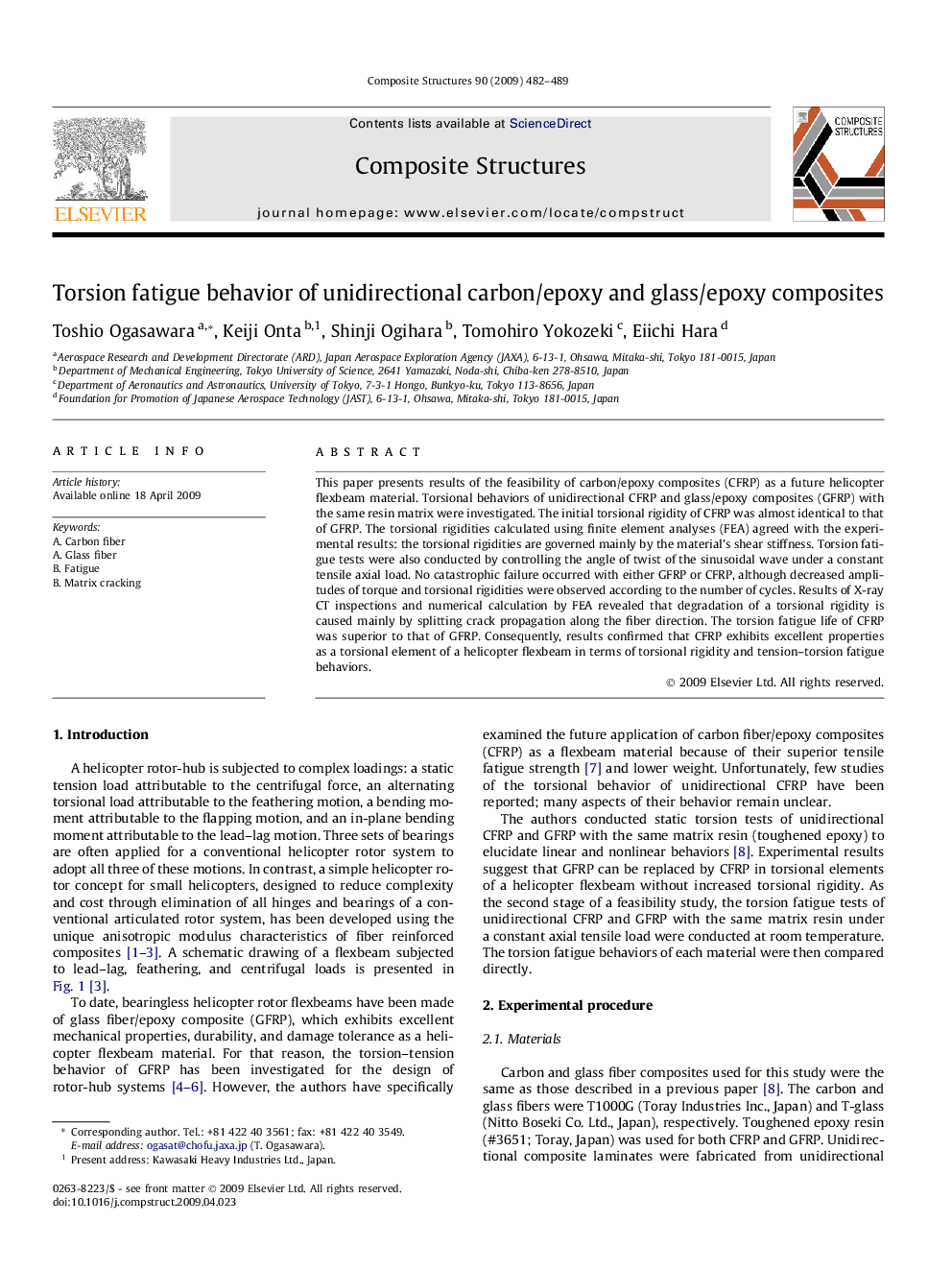| Article ID | Journal | Published Year | Pages | File Type |
|---|---|---|---|---|
| 253285 | Composite Structures | 2009 | 8 Pages |
This paper presents results of the feasibility of carbon/epoxy composites (CFRP) as a future helicopter flexbeam material. Torsional behaviors of unidirectional CFRP and glass/epoxy composites (GFRP) with the same resin matrix were investigated. The initial torsional rigidity of CFRP was almost identical to that of GFRP. The torsional rigidities calculated using finite element analyses (FEA) agreed with the experimental results: the torsional rigidities are governed mainly by the material’s shear stiffness. Torsion fatigue tests were also conducted by controlling the angle of twist of the sinusoidal wave under a constant tensile axial load. No catastrophic failure occurred with either GFRP or CFRP, although decreased amplitudes of torque and torsional rigidities were observed according to the number of cycles. Results of X-ray CT inspections and numerical calculation by FEA revealed that degradation of a torsional rigidity is caused mainly by splitting crack propagation along the fiber direction. The torsion fatigue life of CFRP was superior to that of GFRP. Consequently, results confirmed that CFRP exhibits excellent properties as a torsional element of a helicopter flexbeam in terms of torsional rigidity and tension–torsion fatigue behaviors.
